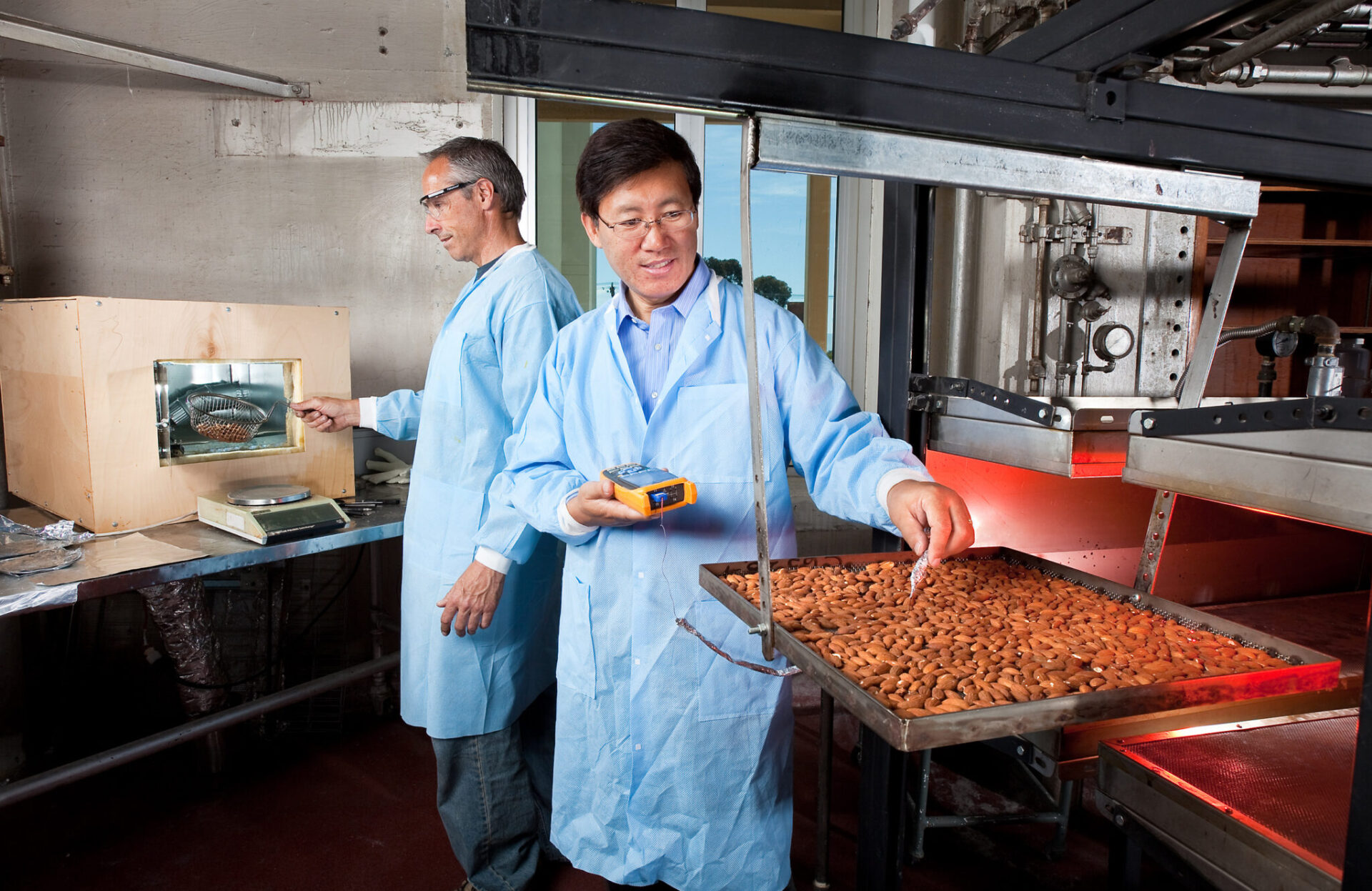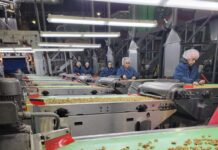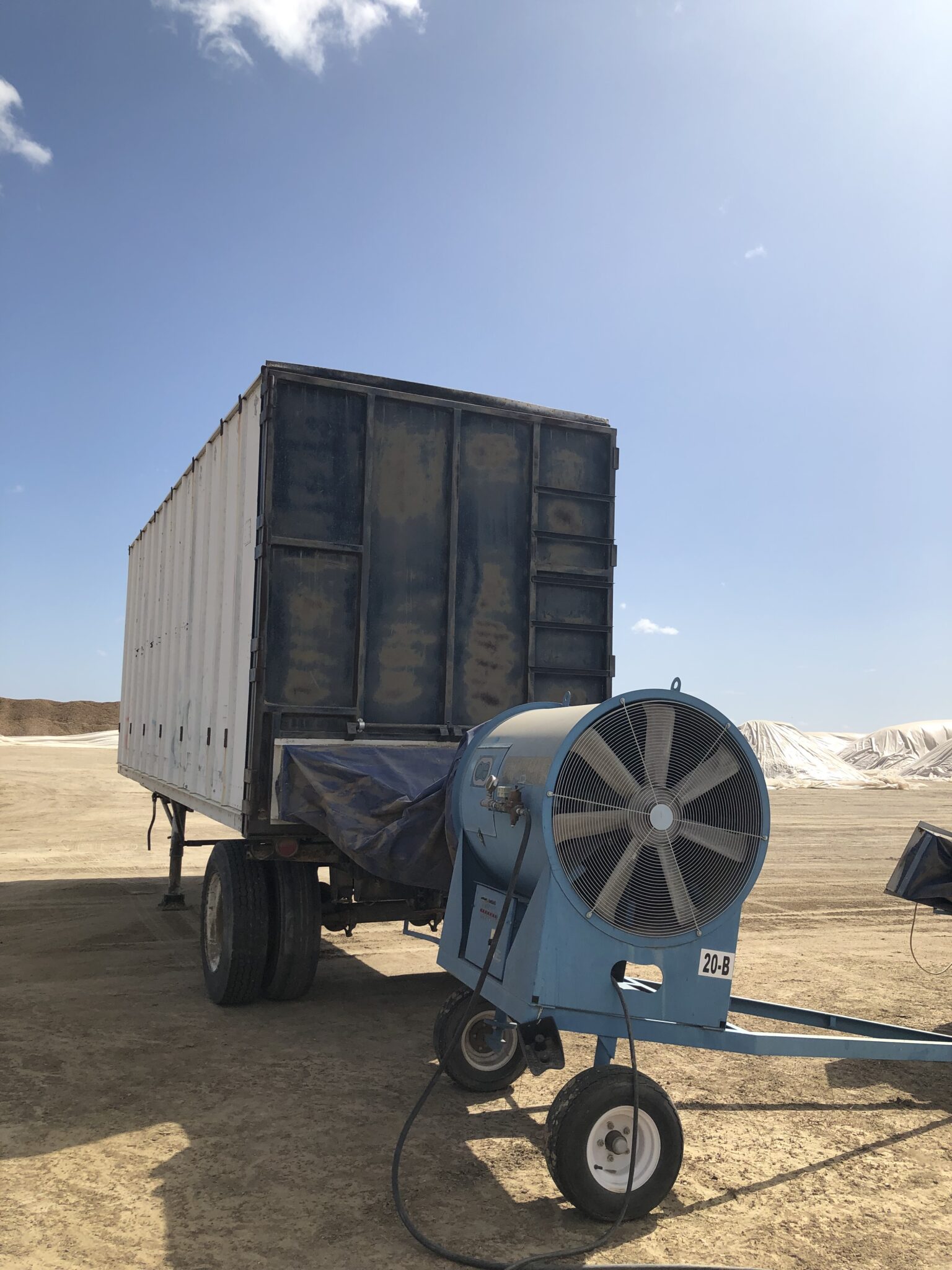
When considering off-ground harvest, how to remove moisture from almonds becomes a major challenge, and an expense, for growers and processor. While this evolving method of harvest may help the industry meet dust reduction goals, it could also add the need for energy to dry the nuts.
Almond Board of California and USDA Agriculture Research Service are both addressing the mechanical drying issue and have considered options including use of infrared drying technology.
Guangwei Huang, associate director of food research and technology research and innovation at the Almond Board, said off-ground harvesting is one of the alternatives to reduce dust during harvest, and this change would also necessitate mechanical drying. The board’s technology-economic analysis has indicated that off-ground harvest followed by mechanical drying on orchard windrow, rented open ground or hot air dryer, is a value proposition for growers.
The board’s research efforts are also focused on building drying capacity for freshly harvested in-hull almonds, developing drying protocol and assessing drying capacity of existing dryer facilities in California, including those used in walnut, prunes and rice, as those drying facilities could be available for almond drying during early harvest season. Drying trailers, like drying wagons used for peanut drying, have shown to be a very feasible and economical choice for in-hull almond drying from a preliminary study.
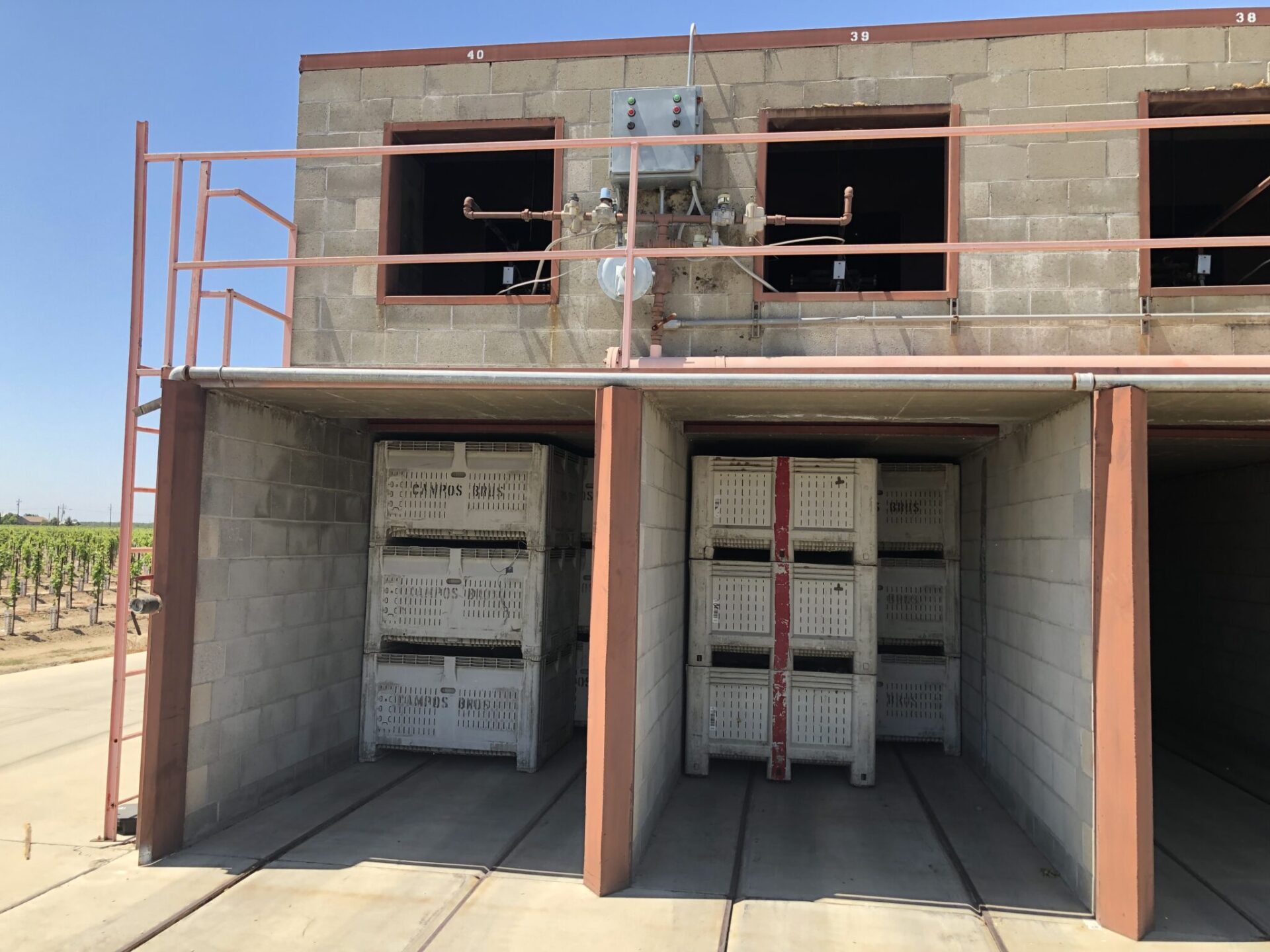
Off-Ground Harvest Research
The current harvest method with natural drying on the orchard floor has the drawbacks of insect infestation, microbial infection and dust generation. The most critical challenge, Huang said, is to dry the almonds rapidly and efficiently in order to handle large volumes of almonds in the short harvest season and to ensure kernel quality.
ABC funded two research projects to determine if off-ground harvest would have significant impact beyond dust reduction. Huang shared that the research showed off-ground harvested almond crops were cleaner with less foreign material included in the loads. Insect damage was also significantly reduced compared to conventionally harvested almonds. Percentage of insect-damaged almonds was 0.8-3.3% in off-ground harvest and 2.0-10% in almonds dried on the ground. Time spent on the ground contributed to the higher insect damage, Huang said, and the results of the study showed that off-ground harvest reduced insect damage by 57 to 67%.
When it comes to drying, Huang said that tests with hot air with temperatures up to 60 degrees C had no adverse effects on the quality characteristics of the almonds, including cavity, kernel color, concealed damage and oil quality. The high temperatures can achieve high drying rate and capacity. Huang believes that the drying temperature can go even higher since wet almond hulls are more heat tolerant and absorb most of the heat.
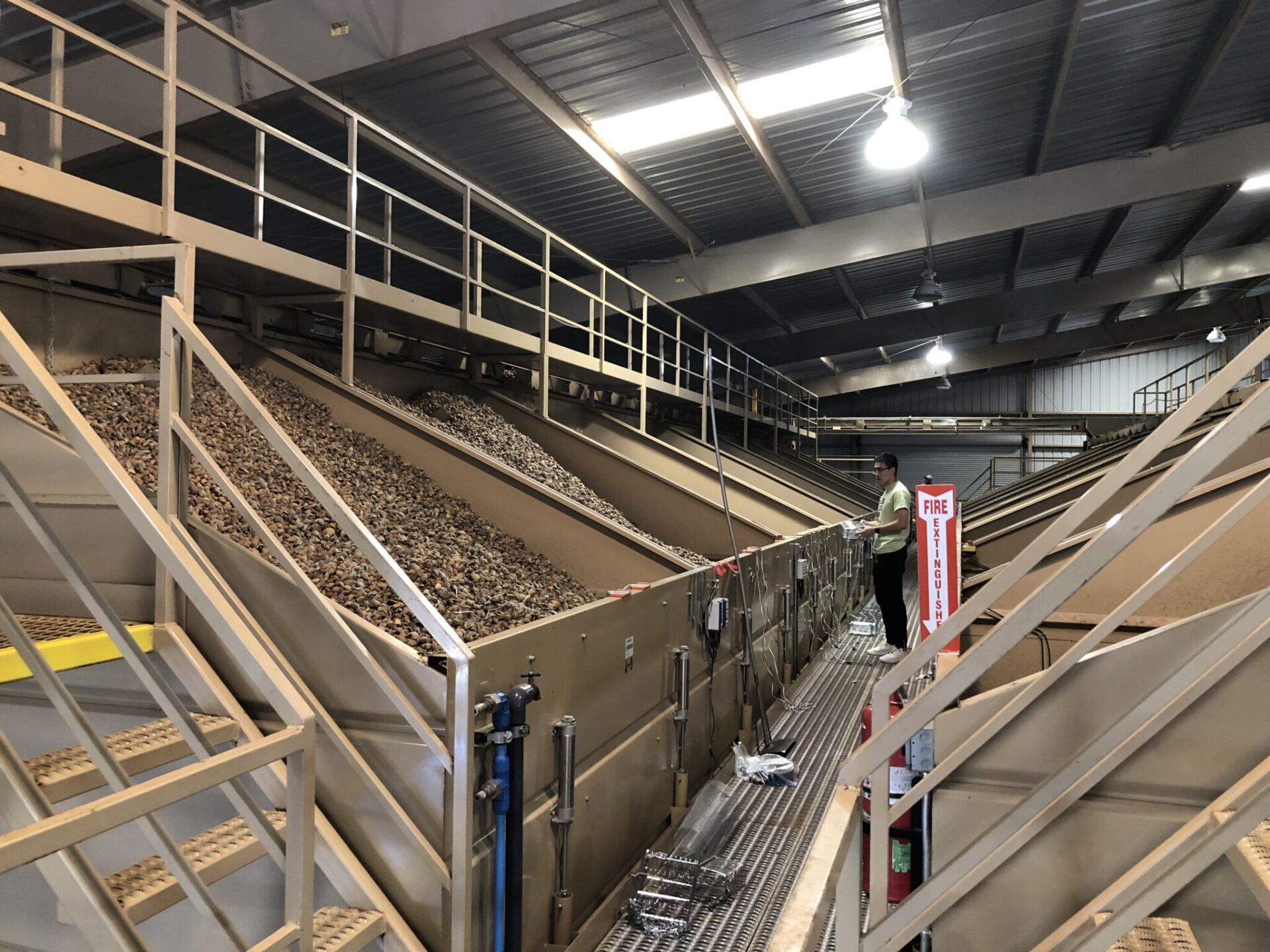
Infrared as a Drying Method
The California walnut industry has been supporting walnut drying research by Dr. Zhongli Pan, USDA-ARS researcher at the Albany facility. The Walnut Commission voiced its support of California Department of Food and Agriculture’s Specialty Crop Block Grant Program for Pan’s proposal to develop new walnut drying methods for reduced drying time and energy usage.
Pan has been working on a drying method using infrared technology to reduce energy use in the drying process and improve nut quality. In walnuts, the standard hot air drying process takes more than 24 hours with the use of natural gas and electricity. Infrared, a form of intense light that is felt but not seen, is a type of electromagnetic radiation much like radio waves, ultraviolet light and microwaves. In walnuts, with a broad range of moisture at harvest, there is a problem with overdrying and underdrying.
Using infrared heating as a pre-drying method quickly removes the entire moisture on the surface of the shell. The pre-drying step takes less than three minutes. The pre-dried walnuts are then sent to the regular hot air drying to finish, reading the optimum 8% moisture level for safe storage. In research station experiments, the infrared technology saved up to 25% of the natural gas and electricity used to dry walnuts. By removing moisture from the surface of walnuts, the drying time was reduced by 35%.
The new drying method could be implemented in the existing facility without the need to build a new drying facility, Pan said. A commercial-scale pre-drying unit using this technology was successfully demonstrated during the 2016 walnut harvest season at Emerald Farms.
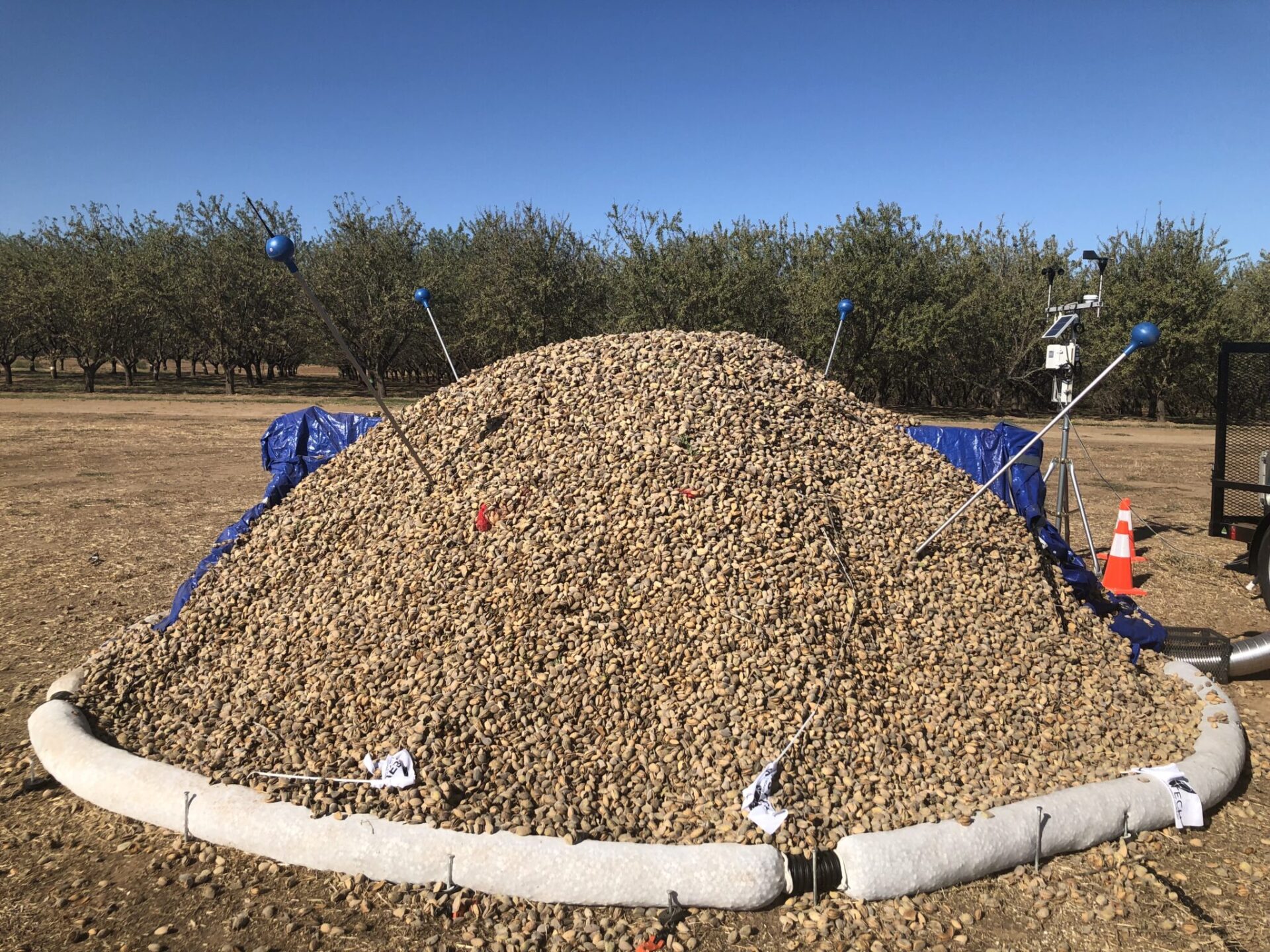
Pan said for this season, more research is going to test variable temperature drying by using 80 degrees C and 90 degrees C to heat almonds to 60 degrees C, then followed by holding and hot air drying. The high-temperature drying can achieve simultaneous disinfection and disinfestation for almonds, resulting in improved product quality and food safety. It was also found that almost 60% of drying energy was used for drying hull. Therefore, when in-hull almonds, in-shell almonds and loose hull were separated based on their dimension and terminal velocities, the in-hull and in-shell almonds were able to be dried more efficiently and uniformly with reduced drying cost. The patent of the new sorting and drying technology of UC Davis is pending. Pan said the new technology should provide a needed solution for the almond industry for reducing insect damage, increasing economic benefits, ensuring food product safety and improving sustainability.
There are many factors involved in mechanical drying of almonds, whether it be hot air drying or infrared technology, said Roger Isom, president of Western Agricultural Processors Association.
If the infrared technology proves to be feasible in almond processing, Isom said, it would address one of the most pressing challenges facing the almond industry—air quality. Currently, hullers and dehydrators are looking at double the cost for new California Air Resources Board compliant drying machinery that has the capacity to handle large volumes of nuts.
Moving to off-ground harvest would mean cleaner loads would be delivered to hullers, Isom said, but the mechanical drying side will have to be addressed. Infrared is part of the conversation and would add some benefits for the industry, he added.
“If it works, it would eliminate the air quality issues, and there is potential, but the technology isn’t here yet.”
